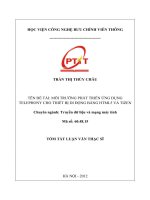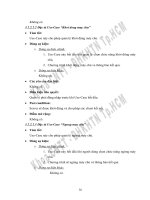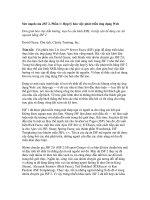HTML5/CSS3 Course
Introduction to HTML5
Presenter: Msc. Luong Tran Hy Hien, FIT of HCMUP.
1
HTML5 = HTML + CSS + JS API
2
Contents
•
•
•
•
HTML5 Structure
HTML5 Audio/Video
HTML5 Form
HTML5 Canvas
3
New and Updated HTML5 Elements
HTML5 introduces 28 new elements:
<section>, <article>, <aside>, <hgroup>,
<header>,<footer>, <nav>,
<figure>, <figcaption>, <video>, <audio>,
<source>, <embed>, <mark>,









